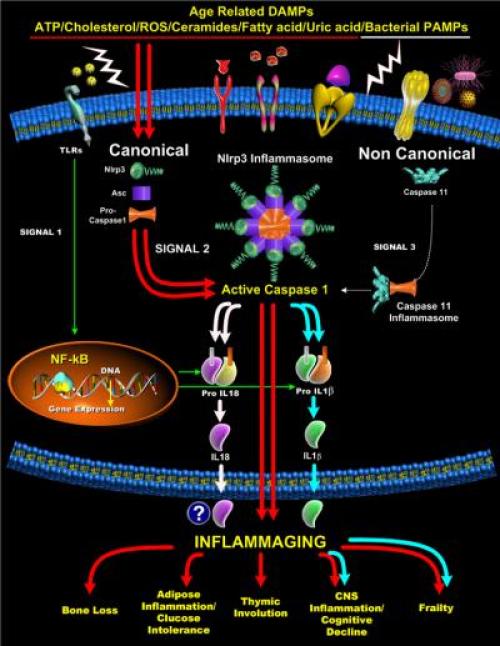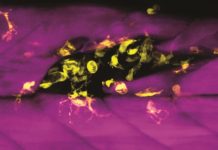 Inflammation is the common denominator of many chronic age-related diseases such as arthritis, gout, Alzheimer’s, and diabetes. But according to a Yale School of Medicine study, even in the absence of disease, inflammation can lead to serious loss of function throughout the body, reducing healthspan — that portion of our lives spent relatively free of serious illness and disability.
Inflammation is the common denominator of many chronic age-related diseases such as arthritis, gout, Alzheimer’s, and diabetes. But according to a Yale School of Medicine study, even in the absence of disease, inflammation can lead to serious loss of function throughout the body, reducing healthspan — that portion of our lives spent relatively free of serious illness and disability.
As the elderly population increases, clinicians are seeing a spike in age-related diseases, but scientists do not fully understand the role of inflammation. What is commonly known is that as we age, our cells change, leading the immune system to produce chronic, low-level inflammation throughout the body. Aging is also a major risk factor for multiple chronic diseases, but according to the researchers, biomedical enterprise spends billions of dollars to tackle each age-dependent disease separately.
In a new cover article in the October issue of Cell Metabolism, researchers have isolated and identified a common trigger of inflammation-driven loss of function that manifests itself in insulin-resistance, bone loss, frailty, and cognitive decline in aging.
“This is the first study to show that inflammation is causally linked to functional decline in aging,” said lead author Vishwa Deep Dixit, professor of comparative medicine and immunobiology at Yale School of Medicine. “There are multiple cellular triggers of inflammation throughout the body, but we’ve pinpointed immune sensor Nlrp3 inflammasome as the specific sensor that activates inflammation with age.”
“If aging is indeed a common factor for multiple diseases, the unanswered question is, can we identify the triggers of aging that cause low-level inflammation so that ‘switching off’ the trigger can slow the onset of multiple chronic diseases that are age-dependent at their onset,” Dixit added. “Since aging affects us all, if this goal can be achieved, it is likely to significantly improve the healthspan and may also lower healthcare costs as the aging population increases in the U.S.”
Dixit and his colleagues investigated the normal aging process of mice that were free of diseases, and fed a normal diet. The research team found that immune sensor Nlrp3 inflammasome is activated in response to aging. They then tested mice to determine if reducing the activity of Nlrp3 inflammasome lowers inflammation, and aging-associated decline in function. Results showed that animals with lower Nlrp3 activation were protected from many age-related disorders such as dementia, bone loss, glucose intolerance, cataracts, and thymus degeneration. Functionally, the mice also performed better, were less frail, and ran for longer durations. The researchers also tested another immune sensor called caspase11, which is activated in response to certain infections, and found that it was not linked to the age-related inflammation process.
“Now that we’ve identified this mechanism in the Nlrp3 sensor, we might be able to manipulate this immune sensor to delay, or reduce inflammation,” Dixit said. “This could lead to the possibility of prolonging healthspan, potentially leading to an old age relatively free of disease or disability.”
Dixit said additional studies are needed to explore whether the Nlrp3 mechanism can be safely manipulated without impairing the immune system. He points out that although there are several anti-inflammatory drugs available, none seem to be effective in expanding the healthspan. “One of our long-term goals is to develop therapies or specific diets that could dampen the excessive inflammation process as a means to prevent chronic diseases,” he said.
Source: Yun-Hee Youm, Ryan W. Grant, Laura R. McCabe, Diana C. Albarado, Kim Yen Nguyen, Anthony Ravussin, Paul Pistell, Susan Newman, Renee Carter, Amanda Laque, Heike Münzberg, Clifford J. Rosen, Donald K. Ingram, J. Michael Salbaum, Vishwa Deep Dixit. Canonical Nlrp3 Inflammasome Links Systemic Low-Grade Inflammation to Functional Decline in Aging. Cell Metabolism, 2013; 18 (4): 519 DOI: 10.1016/j.cmet.2013.09.010














